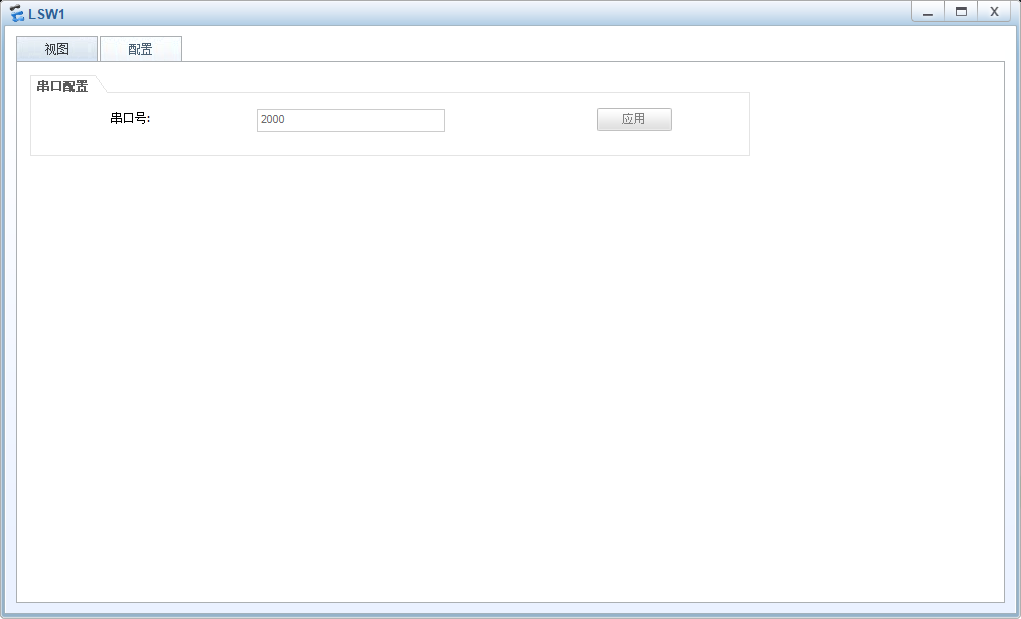ensp 交换机ssh批量配置脚本
本文最后更新于 535 天前,其中的信息可能已经有所发展或是发生改变。
脚本写了一个下午,还没有彻底完工,现在只能自动化配置交换机的ssh,保存的文件还是txt,后来会做成json文件
原理是ensp有个奇怪的特点,他每个设备都有个串口号,而我们可以直接从这个端口直接无密码telnet进设备,然后直接进行配件即可。 像交换机就是从2000开始,第二台就是2001,右键交换机点开设置切换到配置栏即可看见

import telnetlib
import threading
from socket import *
from time import sleep
lock = threading.Lock()
openNum = 0
threads = []
livePort = []
sw_portMappingTable = []
ip_table = []
def portScanner(host, port):
global openNum
try:
s = socket(AF_INET, SOCK_STREAM)
s.connect((host, port))
lock.acquire()
openNum += 1
print('[+] %d open' % port)
livePort.append(port)
lock.release()
s.close()
except:
pass
def checkThePortType(host, port):
try:
print('---------------------------------')
print('正在进行设备类型查询..........')
s = socket(AF_INET, SOCK_STREAM)
s.connect((host, port))
s.send("\r\n\r\n\r\ndisplay device\r\n".encode())
sleep(3)
result = s.recv(1024).decode()
if "name" in result or "login" in result or "pass" in result:
print("当前" + str(port) + "端口设备需要密码")
elif "Device" in result:
result = result.split("\n")
type = result[7][0:2]
if int(type) == 0:
sw_portMappingTable.append(port)
for i in result:
if "Device" in i:
result = host + ":" + str(port) + "(" + i[0:i.index("'s")] + ")"
print(result)
s.close()
except:
pass
def automatedSshConfiguration(host, port):
vlan_ip = int(str(port)[1:4])
if vlan_ip < 10:
vlan_ip += 220
ip_table.append("192.168.1." + str(vlan_ip))
tn = telnetlib.Telnet(host, port)
print("配置管理ip中.........")
# 配置管理ip
tn.write(b"sys\n")
tn.write(b"undo info-center enable\n")
tn.write(b"int vlan 1\n")
ip_message = "ip add 192.168.1." + str(vlan_ip) + " 24\n"
tn.write(ip_message.encode('ascii'))
tn.write(b"q\n")
print("配置stelent中.........")
# 配置stelent
tn.write(b"stelnet server enable\n")
tn.write(b"ssh authentication-type default password\n")
tn.write(b"ssh user user1 authentication-type password\n")
tn.write(b"ssh user user1 service-type all\n")
print("配置vty中.........")
# 配置vty
tn.write(b"user-interface vty 0 4\n")
tn.write(b"authentication-mode aaa\n")
tn.write(b"protocol inbound ssh\n")
tn.write(b"quit\n")
print("配置aaa认证中.........")
# 配置aaa认证
tn.write(b"aaa\n")
tn.write(b"local-user user1 password cipher 123456\n")
tn.write(b"local-user user1 privilege level 3\n")
tn.write(b"local-user user1 service-type ssh\n")
tn.write(b"quit\n")
print("保存配置中.........")
# 返回用户视图,保存配置
tn.write(b"return\n")
tn.write(b"save\n")
tn.write(b"Y\n")
tn.write(b"\n")
sleep(3)
tn.write(b"quit\n")
output = tn.read_very_eager().decode('ascii')
print("配置完成 保存中.........")
tn.close()
print("将ip端口映射写入文件中........")
savaData = "192.168.1." + str(vlan_ip) + " " + str(port) + "\n"
saveTheDeviceMappingTable(savaData)
def main():
setdefaulttimeout(1)
for p in range(2000, 2050):
t = threading.Thread(target=portScanner, args=('127.0.0.1', p))
threads.append(t)
t.start()
for t in threads:
t.join()
for i in livePort:
checkThePortType('127.0.0.1', int(i))
print(sw_portMappingTable)
for i in sw_portMappingTable:
print('正在配置端口为' + str(i) + '的交换机设备')
automatedSshConfiguration('127.0.0.1', int(i))
print('[*] The scan is complete!')
print('[*] A total of %d open port ' % openNum)
def sshConfigurationDetection():
pass
def saveTheDeviceMappingTable(data):
o = open("设备ip端口映射表.txt", mode="a+")
o.writelines(data)
o.close()
if __name__ == '__main__':
main()浏览量: 165
本文参与 腾讯云自媒体同步曝光计划,分享自作者个人站点/博客。
原始发表:2021-10-15 ,如有侵权请联系 cloudcommunity@tencent.com 删除
评论
登录后参与评论
推荐阅读
